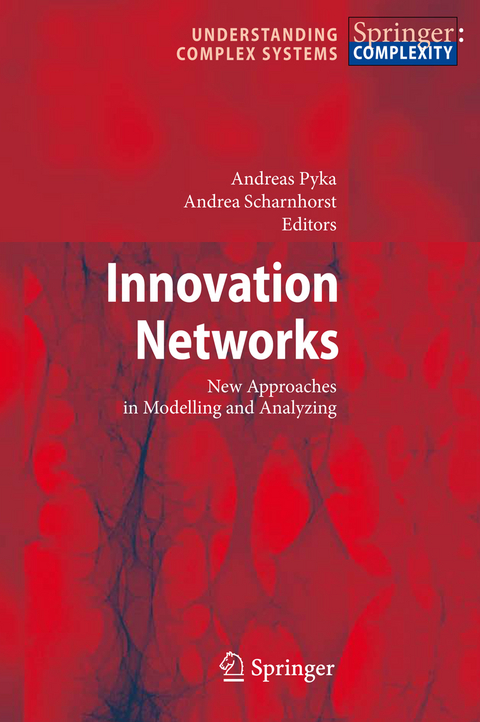
Innovation Networks
Springer Berlin (Verlag)
978-3-642-10077-2 (ISBN)
The science of graphs and networks has become by now a well-established tool for modelling and analyzing a variety of systems with a large number of interacting components. Starting from the physical sciences, applications have spread rapidly to the natural and social sciences, as well as to economics, and are now further extended, in this volume, to the concept of innovations, viewed broadly.
In an abstract, systems-theoretical approach, innovation can be understood as a critical event which destabilizes the current state of the system, and results in a new process of self-organization leading to a new stable state.
The contributions to this anthology address different aspects of the relationship between innovation and networks. The various chapters incorporate approaches in evolutionary economics, agent-based modeling, social network analysis and econophysics and explore the epistemic tension between insights into economics and society-related processes, and the insights into new forms of complex dynamics.
Introduction: Network Perspective on Innovation: Innovative Networks- Network Innovation.- Knowledge Networks: Structure and Dynamics.- Death of Distance in Science? A Gravity Approach to Research Collaboration.- Evolution and Dynamics of Networks in "Regional Innovation Systems".- Agent-based modelling of Innovation Networks-the Fairytale of Spillovers.- Structural Holes, Innovation and the Distribution of Ideas.- Social Network Analysis- A Physics Approach.- Modelling, Evolving Innovation Networks.- Propagation of Innovations in Complex Patterns of Interaction.- Modelling Self-organization and Innovation Processes in Networks.
From the reviews:
"This book is a worthwhile contribution aimed at narrowing down the divergence between the socioeconomic research and the physicists' research on networks. ... provides a valuable resource for those interested in how network structures affect innovation and their outcome ... . the book presents a rich set of models and empirical evidence of networks that mainly represent the share of knowledge between nodes (firms). Readers looking for methods and modelling techniques across innovation studies and statistical physics will find this book of valuable use." (Tommaso Ciarli, Journal of Artificial Societies and Social Simulation, Vol. 13 (1), 2010)
"This book is an edited collection of ten articles that address aspects of the relationship between innovation and networks. ... will be of much value not only to those interested in complex economic or social behaviour, but also to those interested in graph-theoretic, statistical, probabilistic, and algebraic structure of networks." (Charles J. Colbourn, Zentralblatt MATH, Vol. 1174, 2009)
| Erscheint lt. Verlag | 22.10.2010 |
|---|---|
| Reihe/Serie | Understanding Complex Systems |
| Zusatzinfo | X, 330 p. 265 illus. |
| Verlagsort | Berlin |
| Sprache | englisch |
| Maße | 155 x 235 mm |
| Gewicht | 512 g |
| Themenwelt | Naturwissenschaften ► Physik / Astronomie ► Thermodynamik |
| Sozialwissenschaften ► Soziologie | |
| Technik ► Nachrichtentechnik | |
| Wirtschaft ► Allgemeines / Lexika | |
| Wirtschaft ► Betriebswirtschaft / Management | |
| Wirtschaft ► Volkswirtschaftslehre | |
| Schlagworte | Agent-based model • agent-based modeling • Agents • Calculus • Dynamics • Economics • Engineering Economics • Evolution • Evolutionary Economics • Innovation • innvation networks • Knowledge Networks • Modeling • simulated organizations • social network analysis • Social Networks • Statistical Physics • System |
| ISBN-10 | 3-642-10077-5 / 3642100775 |
| ISBN-13 | 978-3-642-10077-2 / 9783642100772 |
| Zustand | Neuware |
| Informationen gemäß Produktsicherheitsverordnung (GPSR) | |
| Haben Sie eine Frage zum Produkt? |
aus dem Bereich


